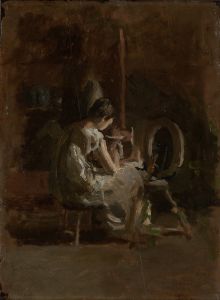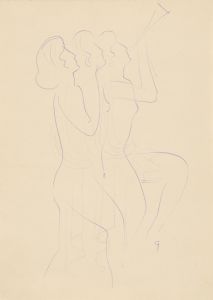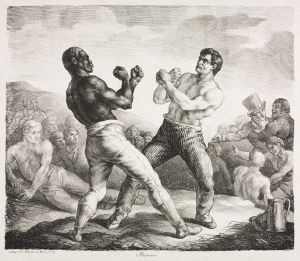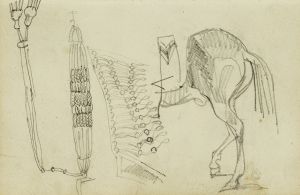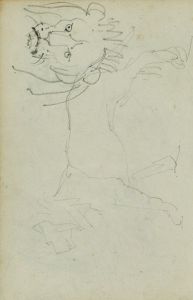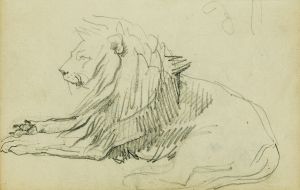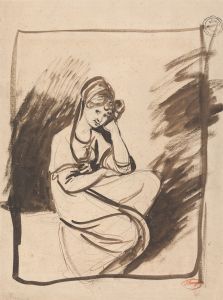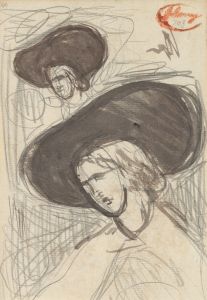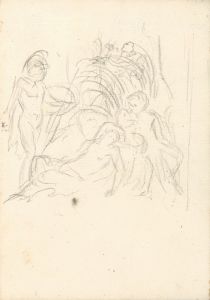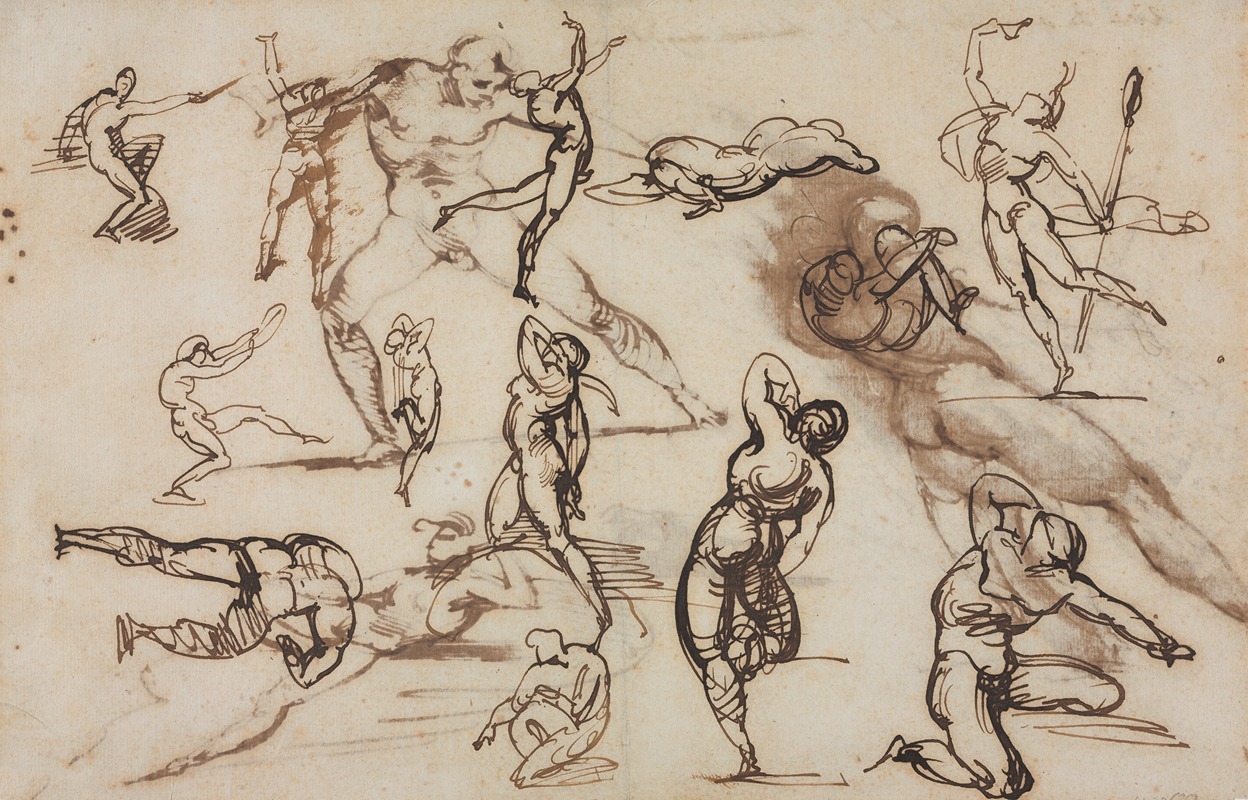
Sheet of Sketches
A hand-painted replica of Théodore Géricault’s masterpiece Sheet of Sketches, meticulously crafted by professional artists to capture the true essence of the original. Each piece is created with museum-quality canvas and rare mineral pigments, carefully painted by experienced artists with delicate brushstrokes and rich, layered colors to perfectly recreate the texture of the original artwork. Unlike machine-printed reproductions, this hand-painted version brings the painting to life, infused with the artist’s emotions and skill in every stroke. Whether for personal collection or home decoration, it instantly elevates the artistic atmosphere of any space.
Théodore Géricault, a prominent French Romantic painter, is best known for his dynamic compositions and powerful depictions of human emotion. Among his works, "Sheet of Sketches" stands out as a testament to his skill in capturing the essence of his subjects through preliminary studies. This piece, although not as widely recognized as his monumental painting "The Raft of the Medusa," provides valuable insight into Géricault's creative process and artistic development.
"Sheet of Sketches" is a collection of drawings that showcases Géricault's adeptness in various techniques and his keen observational skills. The sketches likely served as preparatory studies for larger works, allowing Géricault to experiment with composition, form, and movement. These drawings reveal the artist's fascination with the human figure, a central theme in his oeuvre, and his ability to convey emotion and drama through simple yet expressive lines.
Géricault's sketches often include studies of horses, a subject he was particularly passionate about. His interest in equine anatomy and movement is evident in the detailed renderings found in "Sheet of Sketches." These studies highlight his dedication to understanding the physicality and grace of horses, which frequently appeared in his paintings. Géricault's attention to detail and his ability to capture the dynamic energy of horses contributed to his reputation as a master of equestrian art.
In addition to horses, "Sheet of Sketches" may feature human figures in various poses and expressions. Géricault was known for his exploration of the human condition, often depicting scenes of suffering, heroism, and tragedy. The sketches provide a glimpse into his exploration of these themes, showcasing his ability to convey complex emotions through minimalistic yet powerful drawings.
Géricault's use of light and shadow in his sketches demonstrates his understanding of chiaroscuro, a technique that plays a significant role in his finished paintings. By manipulating light and dark contrasts, he was able to create a sense of depth and volume, bringing his subjects to life on the page. This mastery of chiaroscuro is evident in "Sheet of Sketches," where the interplay of light and shadow adds a dramatic quality to the studies.
The sketches also reflect Géricault's influence from earlier masters, such as Michelangelo and Rubens, whose works he studied extensively. The anatomical precision and dynamic compositions in "Sheet of Sketches" echo the techniques of these Renaissance and Baroque artists, while also showcasing Géricault's unique style and vision.
"Sheet of Sketches" serves as an important document of Géricault's artistic journey, illustrating his process of experimentation and refinement. These drawings not only provide insight into his working methods but also highlight his contributions to the Romantic movement in art. Through his sketches, Géricault was able to explore themes of passion, movement, and emotion, laying the groundwork for his larger, more ambitious projects.
In conclusion, "Sheet of Sketches" by Théodore Géricault is a valuable collection that offers a window into the mind of one of the 19th century's most influential artists. The sketches reveal Géricault's dedication to his craft and his relentless pursuit of capturing the essence of his subjects. While not as widely known as some of his other works, "Sheet of Sketches" remains an essential part of Géricault's artistic legacy, providing insight into the techniques and themes that defined his career.





